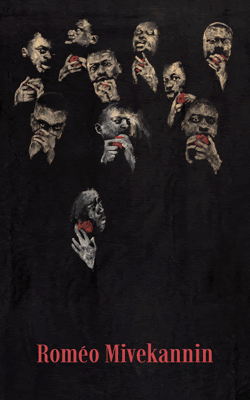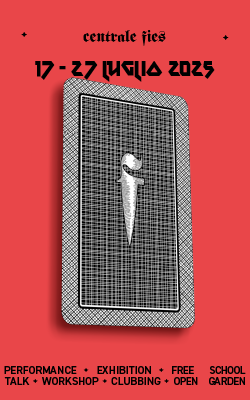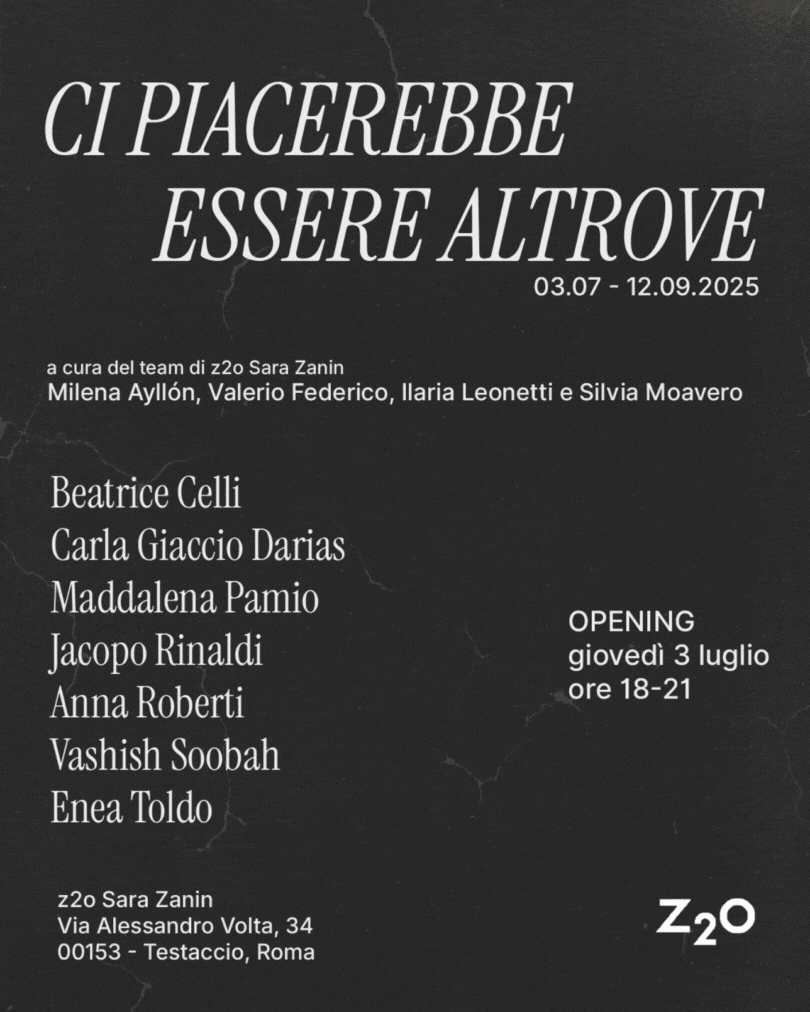[nemus_slider id=”61071″]
English text below
Leggere il mondo e le sue geografie non è affare semplice, né univoco. Mappe, carte, indicazioni, navigatori sono forse strumenti oggettivi per conoscere la realtà, ma non gli unici; anche molti altri oggetti e suggestioni, delle più diverse forme e provenienze, rappresentano tatti distintivi di un luogo all’interno di una personale visione del mondo, che diventa sintesi della propria personalità e delle proprie esperienze.
La mostra TAIYR (colomba in arabo) nasce in seno all’iniziativa dell’Assessorato alla Cultura del Comune di Como che organizza residenze per giovani artisti comaschi nella città gemellata di Nablus, in Palestina. La mostra nella ex chiesa di San Pietro in Atrio (via Odescalchi, Como, fino al 27 novembre), curata da Davide Giannella, è il frutto di questo periodo di vita e creazione a Nablus realizzato da Fatima Bianchi e Nicola Lorini: artisti comaschi cosmopoliti e nomadi per formazione e per carattere. È infatti il nomadismo, l’andare e il tornare, il passare e cogliere qualcosa per portarlo con sé, rielaborandolo e creando, a partire da ciò, qualcosa di nuovo, il perno attorno a cui ruotano le diverse soluzioni artistiche in mostra.
Da una parte Fatima Bianchi che, alla ricerca delle tante storie del suo nome di battesimo, patrimonio di diverse culture e religioni raccolte intorno al Mediterraneo, viaggia dall’Italia alla Francia, dalla Palestina al Portogallo, raccogliendo attraverso un video (in divenire, a mio parere) testimonianze, storie, racconti, suoni, danze, musiche e luoghi legati dal filo sottile teso da un nome femminile, che unisce mille diversità intorno a un comune, seppur sfaccettato, patrimonio culturale. Le donne coinvolte sono le più diverse, e ognuna aggiunge sempre un particolare differente al racconto corale di un patrimonio individuale che si fa collettivo, così come diverse sono le immagini associate a ogni luogo attraversato. Dall’albero al centro del santuario di Fatima al mare che bagna quasi ogni città raggiunta, dagli alti condomini delle banlieus francesi alle basse case in collina dei territori palestinesi occupati, dai giardini sul lago ai luoghi di ritrovo per ballare la propria identità: immagini e suoni, voci e musica si intrecciano per creare una trama condivisa in cui ogni donna protagonista potrà aggiungere il proprio filo. Accanto al video sono poi esposte “prove” della ricerca: scambi di email con donne omonime e i racconti delle loro storie; il testo e la musica della canzone (interpretata in modo emozionante da Nadia Ammour) dedicata all’antico nome di Fatima; fotografie; oggetti ricordo del santuario portoghese di Fatima; un amuleto musulmano della mano di Fatima, figlia di Maometto, che rappresenta la saggezza e tiene lontano il malocchio; il volantino con cui, per le strade, l’artista ha cercato informazioni e storie di tutte le possibili “Fatime” da incontrare. Non oggetti di scena dunque, ma strumenti attraverso i quali il film ha preso corpo, simboli dei luoghi e degli incontri che hanno formato in modo così strettamente personale, ma anche universale, la ricerca di identità, individuale e collettiva – registrata in digitale – dell’artista e delle sue “complici”.

Dall’altra parte, ma non per opposizione, Nicola Lorini, con le sue opere più materiche e concettuali. Sono giochi di incastri e sovrapposizioni i suoi, architetture precarie e fragili – dove sono riconoscibili gli stilemi tipici di architetture occidentali e orientali – create con materiali contrastanti, industriali come l’mdf, naturali come le spugne, il legno, la pietra e le foglie (objets trouvés tra Como e Nablus), e materiali “misti”, ricchi di storia e identità come il sapone, tipico prodotto delle zone del Mediterraneo sud-orientale, e i tessuti jacquard, produzioni secolari del Medioriente e della città affacciata sul lago. Queste due “tele” in particolare, realizzate mediante l’ibridazione tra tecniche tradizionali, come la tessitura al telaio (realizzata grazie all’aiuto della Scuola di Setificio comasca), e nuove tecnologie, come l’inserimento nella trama del tessuto di particolari estratti da fotografie d’archivio digitalizzate e partiture musicali, sono (a mio parere) il punto d’incontro tra la città natale dell’artista e la sua permanenza in Palestina: in queste opere in particolare si intrecciano tradizioni e storie nostrane con racconti, personaggi e luoghi d’oltremare, così vicini e così lontani. Ma anche altri sono i punti di incontro, dai materiali – portati dalla Terra Promessa o raccolti nella casa natale dell’artista –, dalle forme, in cui si accostano modelli architettonici consolidati e storie personali raccolte dall’artista – a colori e suoni lontani ma vividi nel ricordo, archivi orali e digitali, musica e parole, propaganda e inconsapevolezza (molto curiosa è la scoperta, attraverso la storia di Umm Kulthum, la Maria Callas egiziana, dell’esistenza di Radio Bari, radio di propaganda fascista in Medio Oriente, che trasmetteva però in un arabo parlato piuttosto in Nord Africa; la propaganda diventava così un sottofondo senza significato per chi la ascoltava). Anche in questo caso, ad “ausilio” delle opere, sono esposti testi, libri, fotografie e oggetti (come il famigerato sapone di Nablus nella sua caratteristica confezione) che hanno contribuito alla creazione delle opere in mostra.
Una mostra preziosa, Taiyr, in questi tempi di opposizioni. Ma senza retorica alcuna, perché espone in modo semplice e concreto alcuni dei tanti possibili risultati di un incontro tra culture diverse che, con la curiosità e la voglia di condivisione di chiunque ami conoscere, possono nascere e crescere. È soprattutto la condivisione la caratteristica che, mi pare, emerge in modo più evidente; si è esplorato, studiato, lavorato, pensato e vissuto insieme, e da queste semplici azioni fluiscono ricordi e momenti positivi. Naturalmente mutuati dalla visione di ognuno, dalla propria esperienza, ma di tutti. Il tempo passato in un luogo si mescola a tutti i tempi vissuti altrove, le persone incontrate si perdono e si ritrovano, sapori, odori, colori e voci si uniscono ai nostri, arricchendoli. Chissà se il nomadismo è proprio questo, continuare a muoversi non perché non si sia soddisfatti di ciò che si è trovato e vissuto, ma per un’eterna voglia di vivere tutto il possibile, e scoprire se in ogni luogo del mondo si è sempre diversi, o se si resta sempre uguali.
D’altronde, l’identità è davvero un intreccio di mille fili, in quale altro luogo, se non a Como, potrebbero saperlo meglio?

“Recalculating….” – Personal geographies on show in Como
Reading the world and its geographies is not easy, nor univocal. Maps, directions, navigators could be objective instruments to get to know our reality, but not the only ones; there are a lot of other things and suggestions, having the most diverse origins and forms, which could represent some distinguishing features of a place inside a personal vision of the world, which is a summary of someone’s personality, experiences and encounters with different places, cultures and people.
The exhibition TAIYR (dove in Arabic) was born thanks to the initiative of the Cultural Department of the City of Como, which organizes residencies for young artists from Como in the sister city of Nablus, Palestine. The exhibition taking place in the former church of San Pietro in Atrio (via Odescalchi, Como, until November 27th), curated by Davide Giannella, is the outcome of this life and creation period lived by Fatima Bianchi and Nicola Lorini, both coming from Como, and cosmopolitan and nomad artists because of their character and education.
It is actually the theme of nomadism, the movement of leaving and coming back, passing by and grabbing something to take it with you, working on it and creating something new – it is exactly this, the pivotal point around which the different artworks on show rotate. The synthesis of places, meetings, histories, objects, find an expression in the most diverse art forms, thanks to the work of the two young protagonists.
On one hand we find Fatima Bianchi who, looking for the different histories of her surname, a heritage of different cultures and religions around the Mediterranean Sea, travels from Italy to France, from Palestine to Portugal, collecting through a video (which will always continue to grow, in my opinion) testimonies, histories, tales, sounds, music and places all tied by the thin thread of a female name, which joins together thousands of multiplicities around a common, even if very multifaceted, cultural heritage. The women involved in this project are very different from one another, and everyone of them adds a peculiar detail to the choral story of an individual heritage that becomes collective, exactly like it is for the images associated to every different place crossed by the artist, which are very varied. From the tree that represents the center of the shrine of Fatima to the sea that flows through almost every city involved in the project, from the tall blocks of flats in the french banlieus to the small houses on the hills of the Palestinian occupied areas, from the gardens on the lake shores to the meeting points to dance everyone’s own identity: images and sounds, voices and music intertwine to create a shared weave where every protagonist will add her own thread. Beneath the video it is possible to admire some “proof” of the research: emails correspondence with namesake women and the transcription of their stories; the text and music of the song (touchingly interpreted by Nadia Ammour) dedicated to the ancient name of Fatima; photographs; souvernirs of the Portuguese shrine; a Muslim talisman depicting the hand of Fatima, Mohammed’s daughter, which represents wisdom and removes the hex; the flier with which, on the streets of the cities where she worked, the artist looked for information and the stories of every possible “Fatimas” to meet. Not stage objects then, but instruments through which the film took its shape, symbols of the places and encounters that formed, so personally, but also universally, the individual and collective identity quest – digitally recorded – of the artist and her “accomplices”.
On the other hand, but not opposed, Nicola Lorini, with his more conceptual and material-based works. His works are shape sorters and superimpositions, precarious and fragile architectures – where it’s easy to recognize some typical oriental and occidental shapes – created with contrasting materials, industrial like mdf, natural like sponges, wood, rocks and leaves (objets trouvés between Como and Nablus), and “mixed” materials, rich in history and identity like soap, a typical product of the southern area of the Mediterranean, and the jacquard fabrics, centuries-old productions of the Middle-East and the city on the lake shore. These two “canvases” in particular, realized through a mix of traditional techniques, as the loom weaving (thanks to the help of the Scuola di Setificio of Como), and new technologies, as the addition inside the weave of the fabric of details extracted from digitalised archive pictures and music scores, are (in my personal opinion) the meeting point between the native city of the artist and his experience in Palestine: very clearly, in these works it is possible to see how local traditions and histories can intertwine with overseas stories, characters and places, so far away but so close. But there are other meeting points, from the materials – brought from the Promise Land or picked in Lorini’s native house –, to the shapes, where strong architectonic models and personal stories collected from the artist get together – to distant colors and sounds, but lively in the memories, oral and digital archives, music and words, propaganda and ignorance (it is very curios to get to know, through the story of Umm Kulthum, the Egyptian Maria Callas, the existence of Radio Bari, a fascist propaganda radio in the Middle East, which broadcasted in Arabic, but a variation of this language that was used in North Africa; the propaganda became then just a soundtrack without meaning for the people listening to it). Also in this case, as a “help” for the works, we can find texts, books, pictures and objects (as the famous soap of Nablus in its special package) that contributed to the creation of the exhibited artworks.
A precious show, Taiyr, in these times of oppositions. But without any rhetoric, as it exhibits in a simple and concrete way some of the many possible results of the encounter of two different cultures which – through the curiosity and will of everyone who loves to meet new perspectives – could be born and grow. It is sharing the characteristic that, more evidently, emerges in the show, in my opinion; positive memories and moment flow from exploring, studying, working, thinking and living together, all from these simple actions. Everything is clearly mediated through a personal vision, a personal experience, but these things become a collective heritage. The time spent in a place mixes with the times lived in every other place, the people we met can be lost and found again, tastes, smells, colors and voices mix with our owns, making it richer. Who knows if nomadism is exactly this, to keep moving not because of a non-satisfaction of what one found and lived, but for an eternal will of living every possible thing, and discovering if in every spot on earth we are always different, or always the same.
After all, identity is a twist of thousands of threads, and where else, if not in Como, could it possibly be better understood?
TAIYR
Fatima Bianchi | Nicola Lorini
Curated by Davide Giannella
Until November 27th, 2016
San Pietro in Atrio
Via Odescalchi, Como
Tuesday – Sunday 2.30 – 6.30 PM











